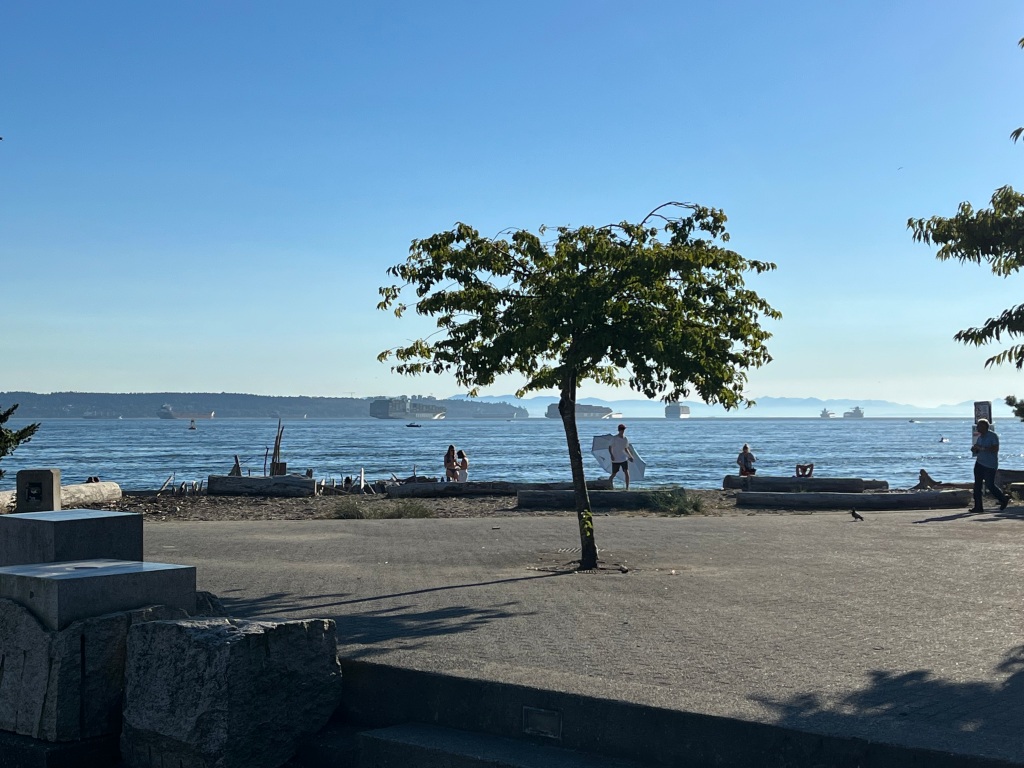
“Stanley Park from Ambleside” Phone Photo, DS
Ellard, Colin. Places of the Heart: The Psychogeography of Everyday Life. New York, NY: Bellevue Library Press, 2015.
477 words
“Regardless of what can be known about the thinking that lay behind the careful construction of Goebekli Tepe, six thousand years before the invention of the written word, one thing is clear –– what happened there may represent the very beginning of what has now become a defining characteristic, perhaps the defining characteristic of humanity: we build to change perceptions, and to influence thoughts and feelings; by these means, we attempt to organize human activity, exert power, and in many cases, to make money. We see examples of this everywhere, scattered through the length and breadth of human history.” (Ellard, 15)
“Breathtaking natural phenomena like an inky starlit sky or the depths of the Grand Canyon, or a human-built artifact like a cathedral ceiling, can exert measurable influence on our feelings about ourselves, how we treat others, and even our perceptions of the passage of time.”
“When we visit a shopping mall or a department store . . . we find ourselves entering almost a hypnotic state with lowered defenses, diminished reserve, and a heightened inclination to spend money on something we don’t need. . . by careful design.”
“A walk through a busy, urban street market teeming with colorful wares, the delicious aroma of food, and a hubbub of human activity . . . can cause our moods to soar.” (16)
“The areas of our brain that process feelings are widely distributed . . . It is difficult to overestimate the importance of such findings for our overall understanding of how the brain produces adaptive behavior . . . “ (19)
“Walls reinforce or perhaps even create social conventions and cultural norms. The invention of dedicated sleeping spaces in homes changed our views about sexuality. The design of traditional Muslim homes and even of streetscapes reified beliefs about gender and generational divisions.” (25)
“Despite our modern state of detachment from the conditions that originally shaped us, most of us still crave contact with nature . . . We are innately attracted to elements of places that for our forebears might have made the difference between life and death . . . When we visit new cities, we naturally gravitate toward whatever verdant squares and gardens may be on offer. “ (30)
“Our preferences for the appearance and arrangement of trees takes us one step beyond simple spatial consideration and into the realm of color, texture, and form.” (36)
“One can see the hallmarks of these preferences in almost every aspect of our behavior, from where we choose to walk and sit, what we like to look at, and how we try to arrange our lives, alternating as much as possible between powerful forces of technologies that shape our attention and the restorative effects of natural settings . . . More than any other single factor, our cravings for nature underlie the psycho-geographic structure of our lives.” (51)
Even visiting gardens virtually can have powerful effects. Here is one where I recently explored the blue poppies online at Reford Gardens in Quebec:
. . .








